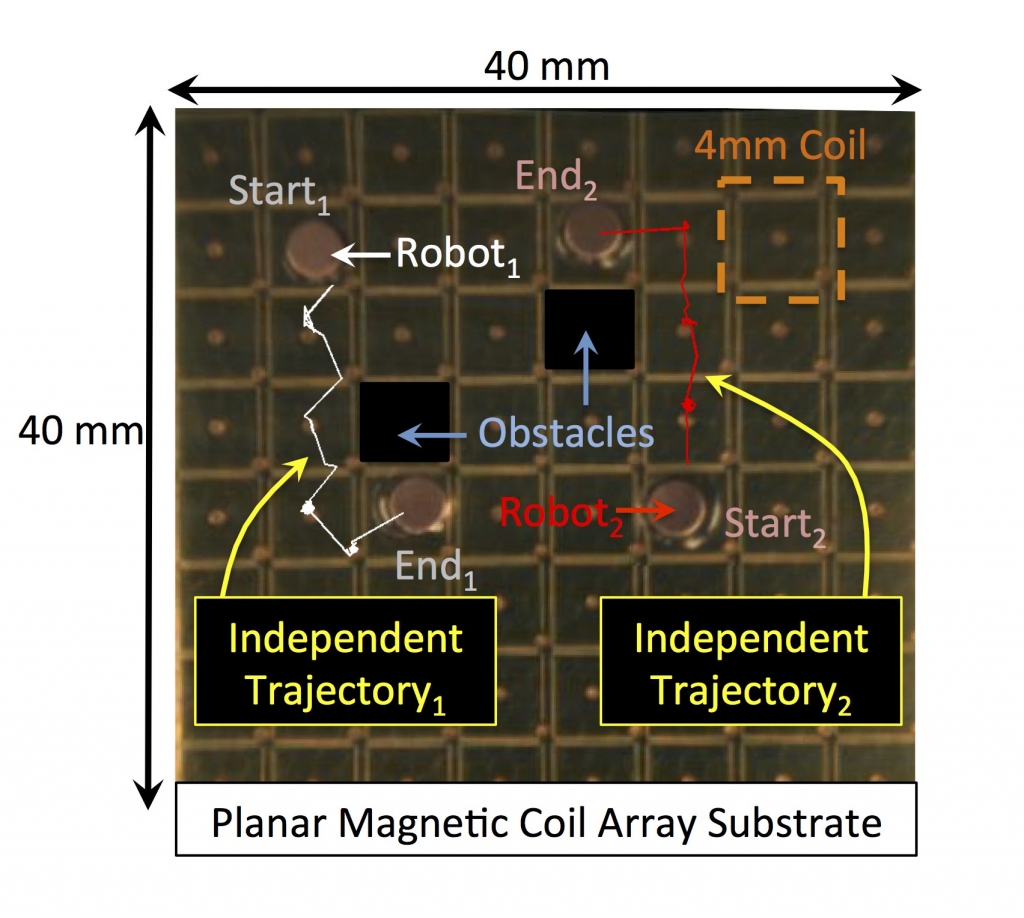-
Tips for becoming a good boxer - November 6, 2020
-
7 expert tips for making your hens night a memorable one - November 6, 2020
-
5 reasons to host your Christmas party on a cruise boat - November 6, 2020
-
What to do when you’re charged with a crime - November 6, 2020
-
Should you get one or multiple dogs? Here’s all you need to know - November 3, 2020
-
A Guide: How to Build Your Very Own Magic Mirror - February 14, 2019
-
Our Top Inspirational Baseball Stars - November 24, 2018
-
Five Tech Tools That Will Help You Turn Your Blog into a Business - November 24, 2018
-
How to Indulge on Vacation without Expanding Your Waist - November 9, 2018
-
5 Strategies for Businesses to Appeal to Today’s Increasingly Mobile-Crazed Customers - November 9, 2018
Magnetic Force Fields Can Control Miniature Robots, Says Purdue University Researchers
Mimicking the same thing, Purdue University researchers have designed a magnetic fields system and using it, they control mini-bots that work independently, but display cooperative behavior.
Advertisement
Engineers plan to use mini force fields to move microrobots around.
According to the university, the breakthrough in independent microbot control could prove useful in building microelectromechanical systems (MEMS) – tiny machines with applications ranging from homeland security to medicine. The research team, headed by mechanical engineering professor David Cappelleri, has said that the new technique will allow the microbots to complete complex tasks that require them to cooperate. “They can independently move, yet all work together to perform tasks such as lifting and moving things”.
Cappelleri explains the team is interested in independent movement of each private in tiny army so they can learn to perform cooperative manipulation tasks.
In this case, the researchers developed a system to control the robots with individual magnetic fields from an array of tiny planar coils. Since the severely miniaturized machines are way too small to feature batteries, onboard power wasn’t really an option.
What’s more, the magnetic fields actually power the robots as well.
The new technology involves printing planar coils directly onto the substrate and the robots will be independently operated through attractive or repulsive forces, and maintaining the electrical current levels of the coils. The technique, detailed in the journal Micromachines, also accounts for keeping the robots powered.
Though the microbots used measure around 2 mm in diameter, the researchers are hoping to scale the size down to around 250 µm in diameter. Cappelleri said, “You can think about using teams of robots to assemble components of small-scale, which we could use for microscale additive manufacturing”. Prof. Cappelleri has affirmed that magnetic force fields allow microbots to move independently.
“So far people have been good at making MEMS devices containing different components”, he said. This is very challenging. “You could think about putting the microcoils at the bottom of a petri dish”. According to Discovery News reports, if these applications become practically viable, they can be successfully used in production as well as in medicine such as using the mini-bots to diagnose cancer through biopsies and more.
In some previous work, the researchers were able to put force sensors on the end of these robots to figure out which cells are stiffer than others.
Advertisement
The coils are made by copper pattern using the same technology that has been used for manufacturing printed circuit boards.




























